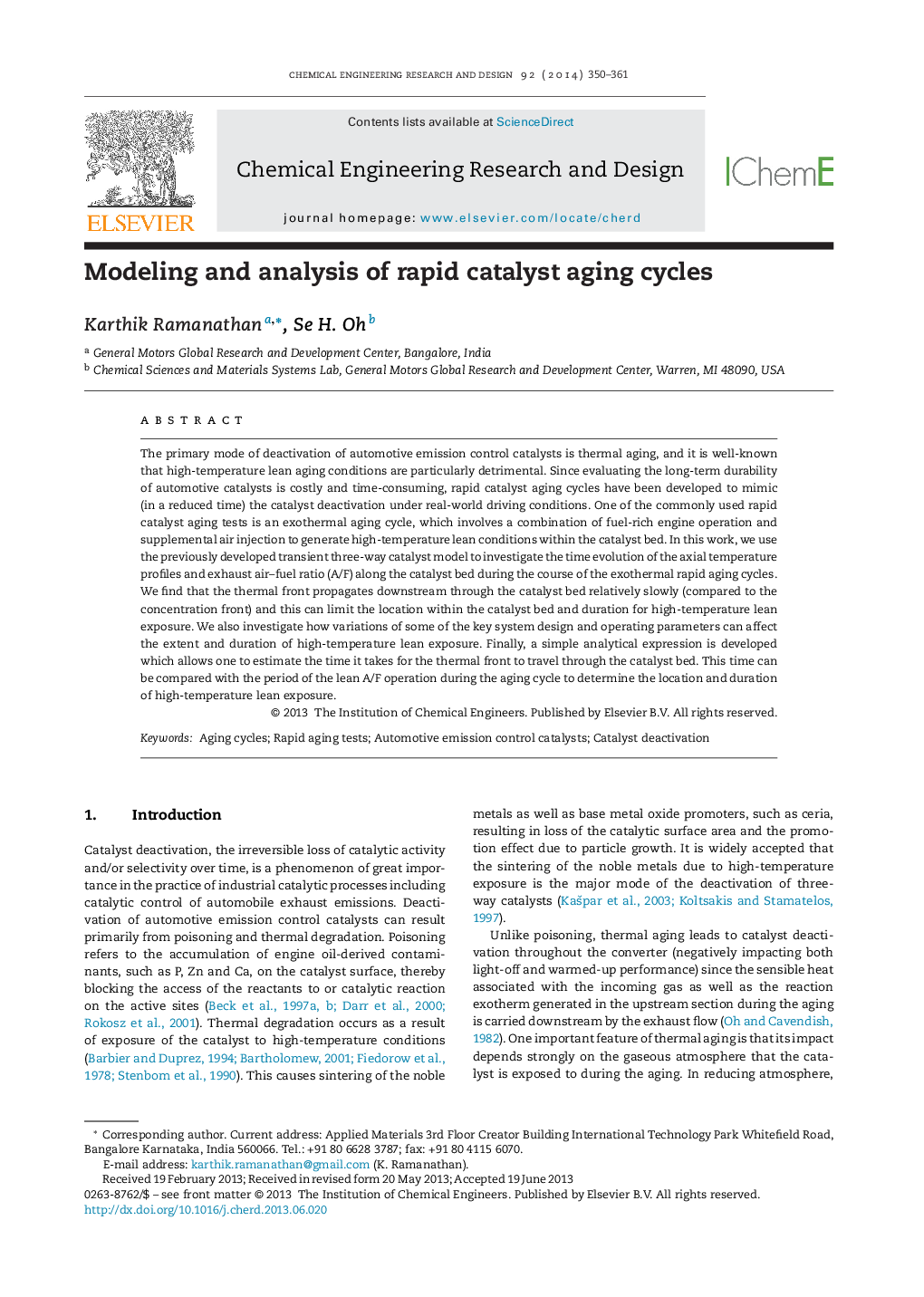| Article ID | Journal | Published Year | Pages | File Type |
|---|---|---|---|---|
| 621322 | Chemical Engineering Research and Design | 2014 | 12 Pages |
Abstract
The primary mode of deactivation of automotive emission control catalysts is thermal aging, and it is well-known that high-temperature lean aging conditions are particularly detrimental. Since evaluating the long-term durability of automotive catalysts is costly and time-consuming, rapid catalyst aging cycles have been developed to mimic (in a reduced time) the catalyst deactivation under real-world driving conditions. One of the commonly used rapid catalyst aging tests is an exothermal aging cycle, which involves a combination of fuel-rich engine operation and supplemental air injection to generate high-temperature lean conditions within the catalyst bed. In this work, we use the previously developed transient three-way catalyst model to investigate the time evolution of the axial temperature profiles and exhaust air-fuel ratio (A/F) along the catalyst bed during the course of the exothermal rapid aging cycles. We find that the thermal front propagates downstream through the catalyst bed relatively slowly (compared to the concentration front) and this can limit the location within the catalyst bed and duration for high-temperature lean exposure. We also investigate how variations of some of the key system design and operating parameters can affect the extent and duration of high-temperature lean exposure. Finally, a simple analytical expression is developed which allows one to estimate the time it takes for the thermal front to travel through the catalyst bed. This time can be compared with the period of the lean A/F operation during the aging cycle to determine the location and duration of high-temperature lean exposure.
Keywords
Related Topics
Physical Sciences and Engineering
Chemical Engineering
Filtration and Separation
Authors
Karthik Ramanathan, Se H. Oh,
